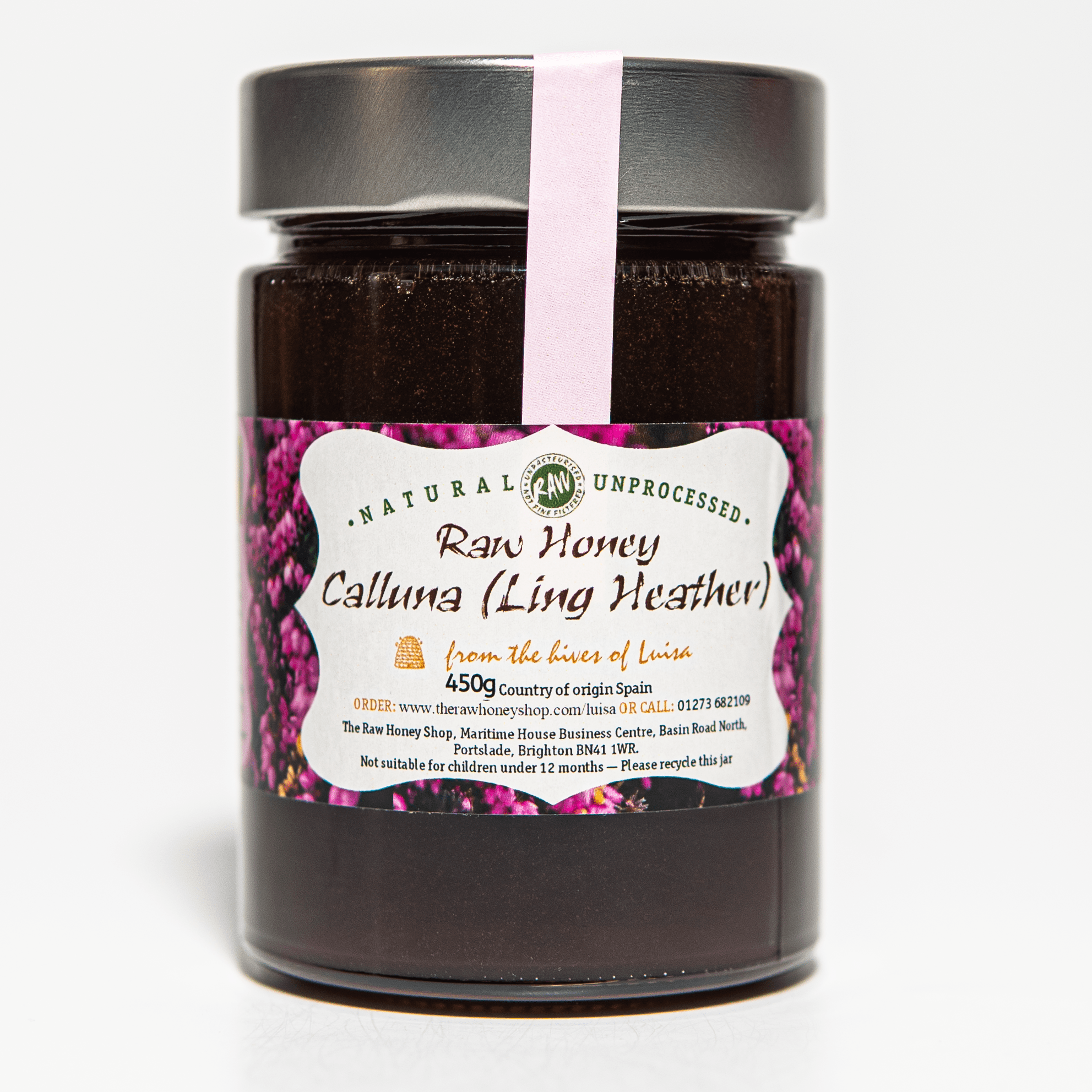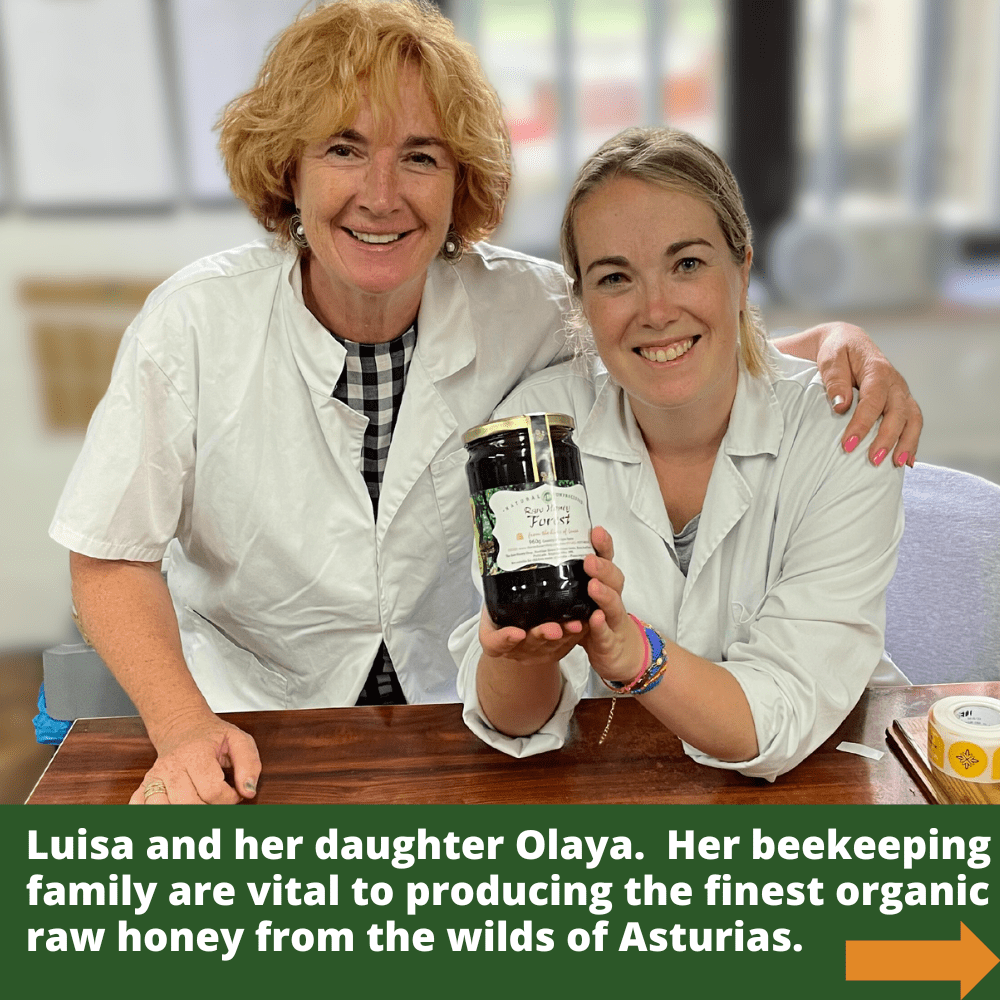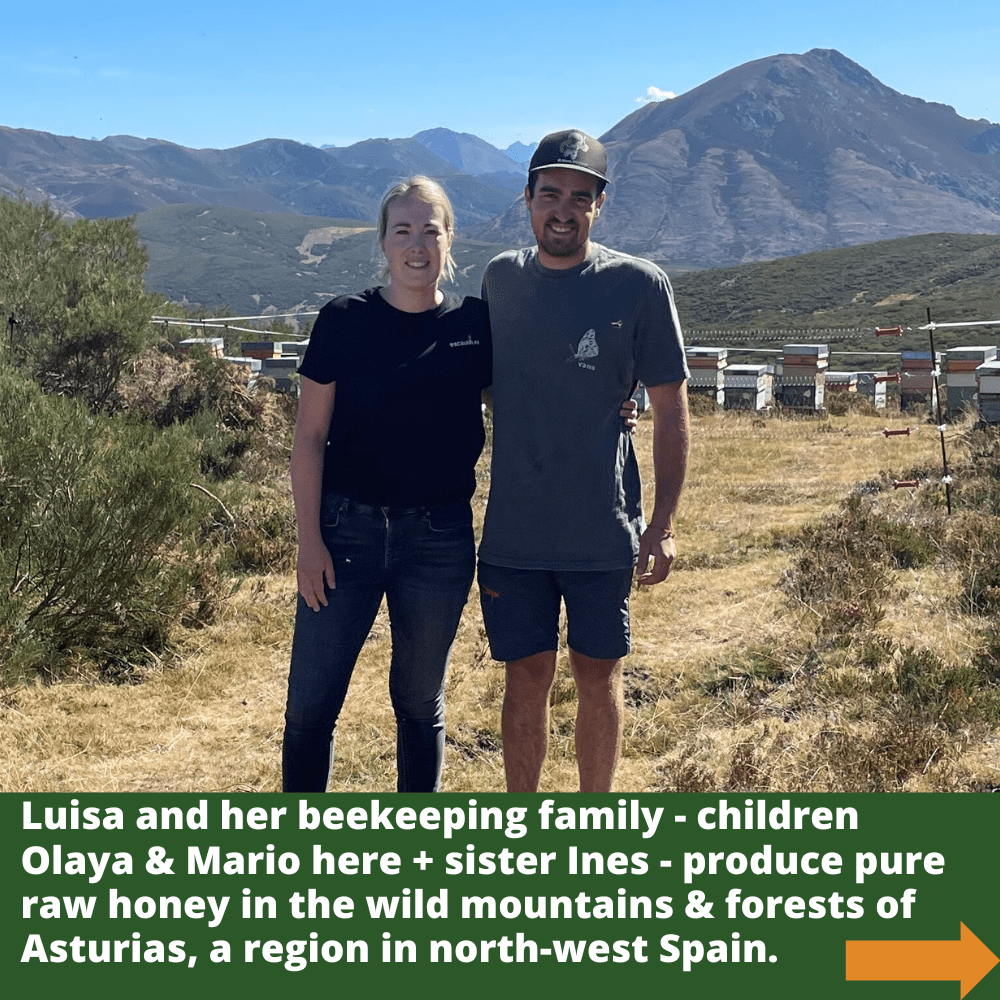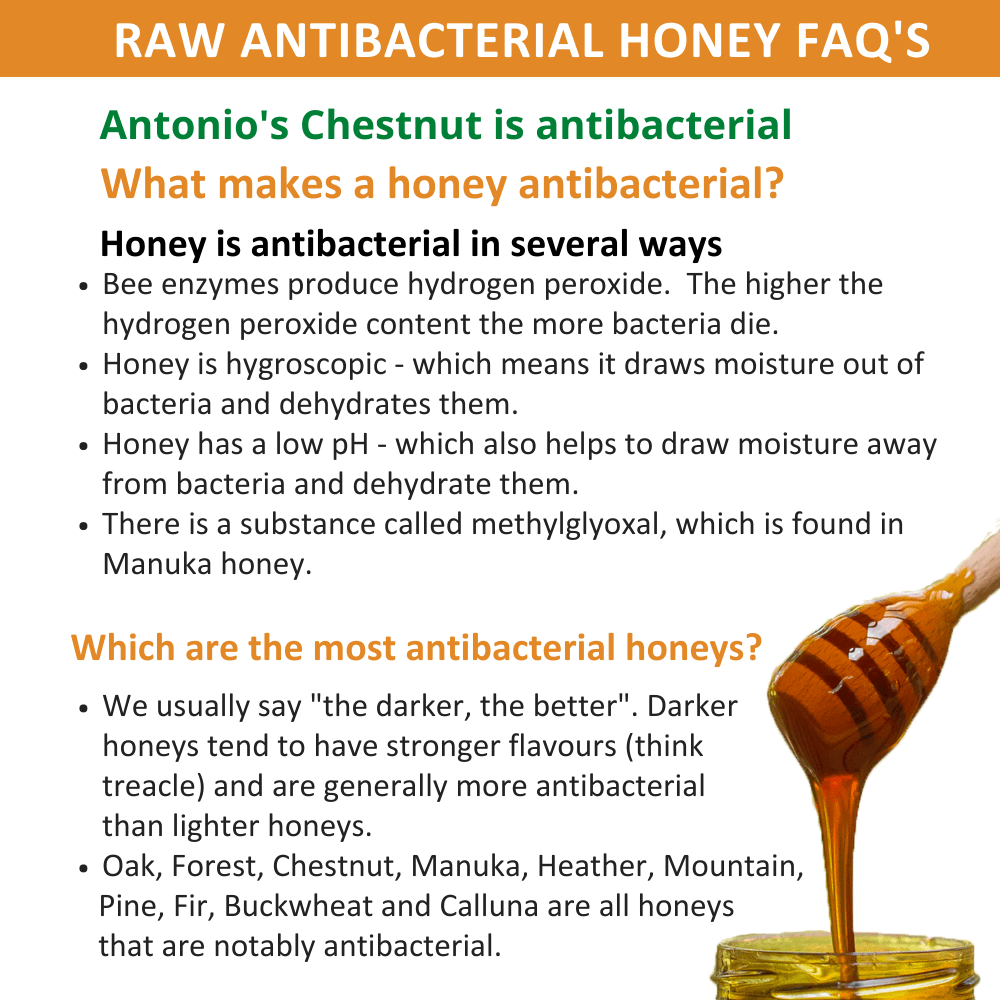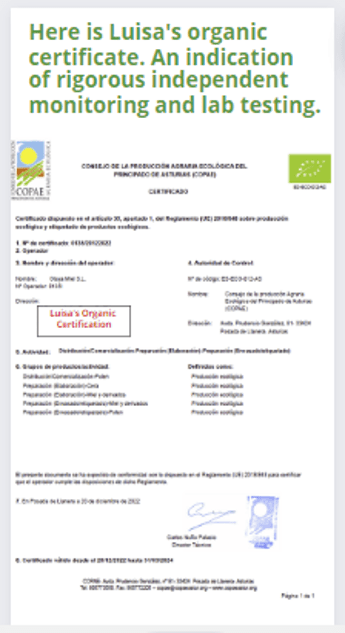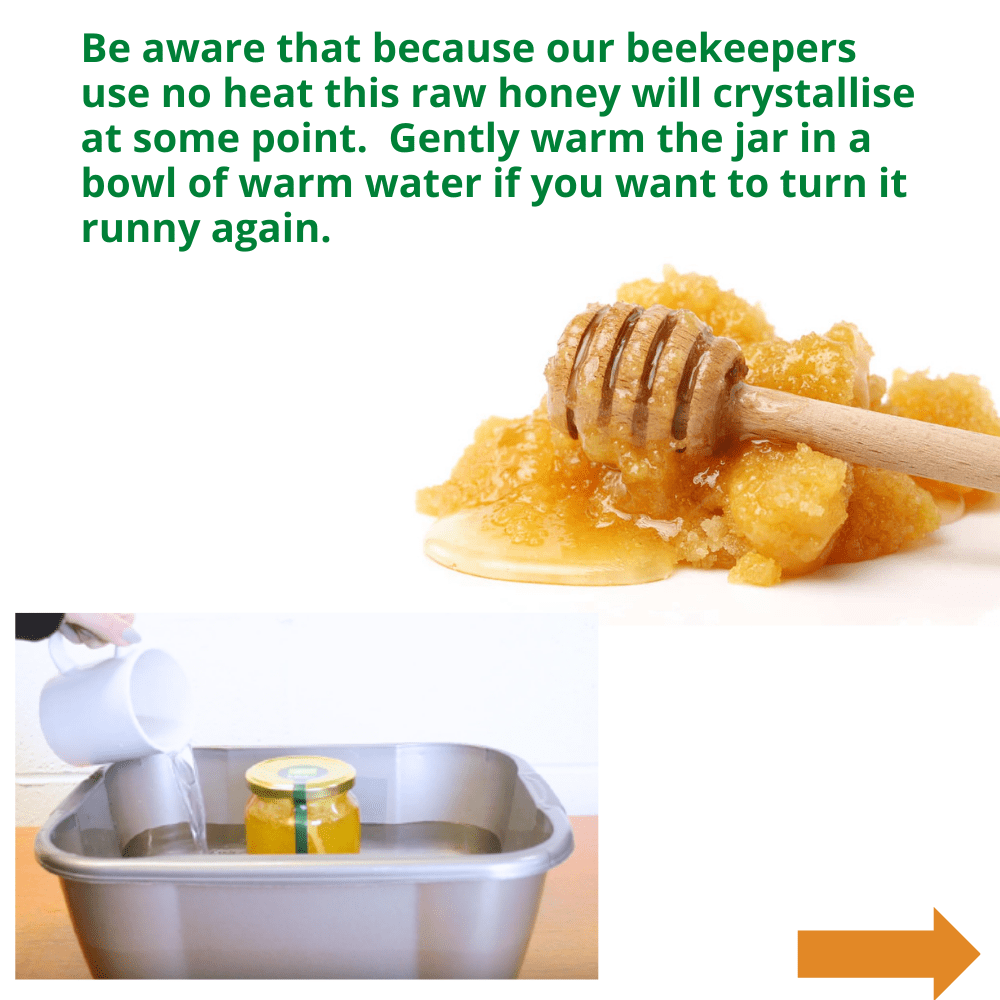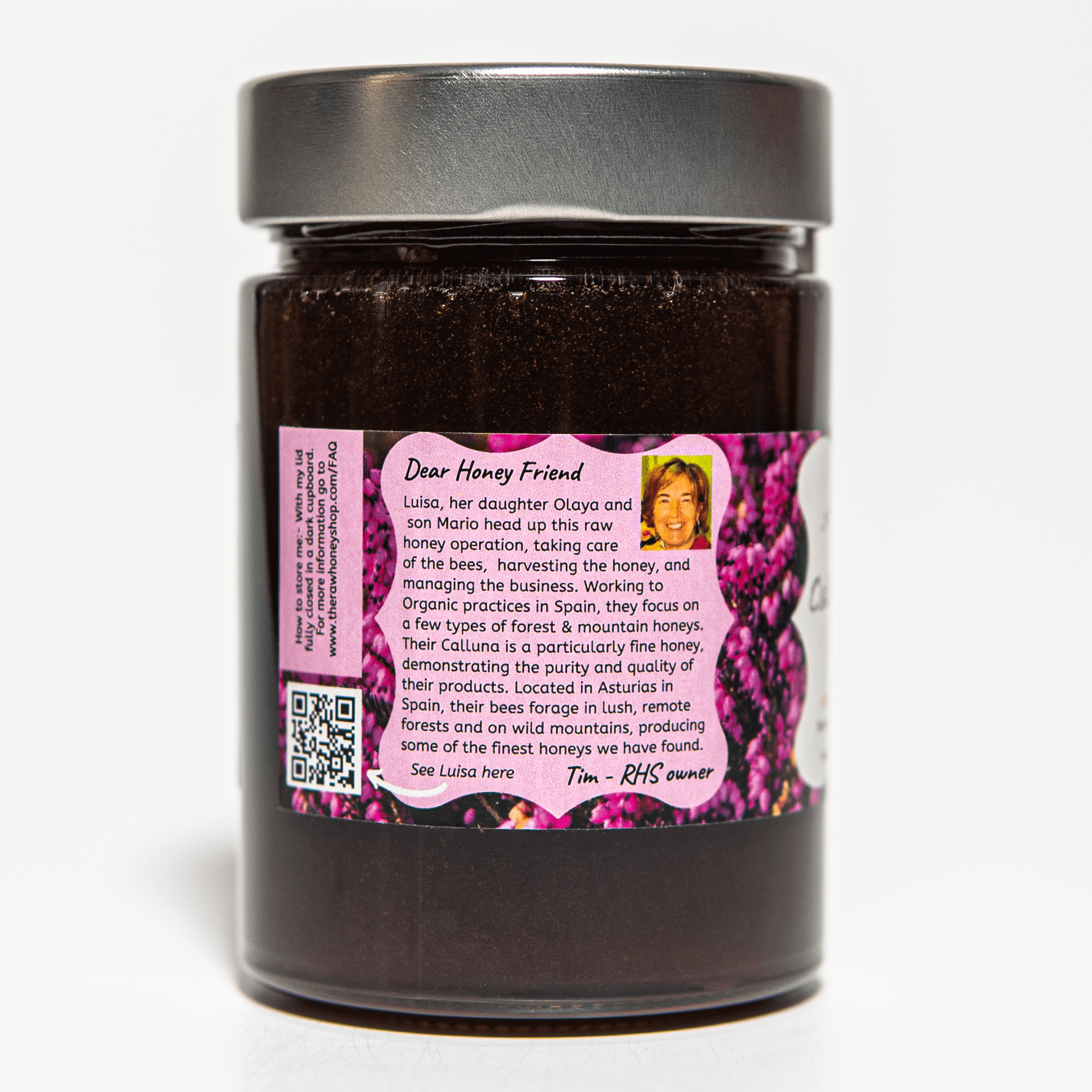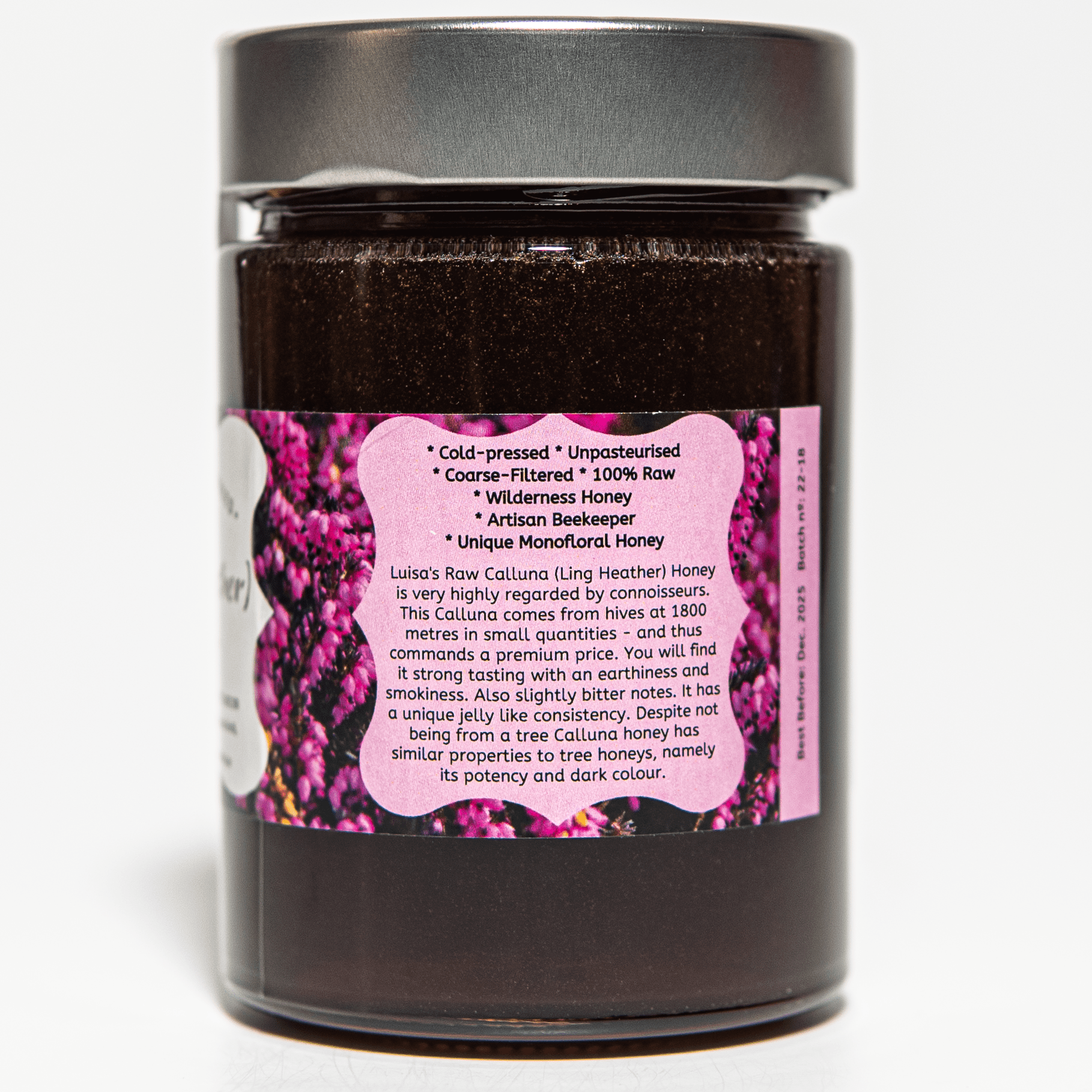Miel de Calluna (Bruyère Ling) cru - 450g
- Prix habituel
- GBP 14.59
- Prix de vente
- GBP 14.59
- Prix habituel
-
GBP
- Miel brut, naturel et l'un des types de miel les plus purs en raison de la région montagneuse reculée d'où il provient.
- Antibactérien, filtré grossièrement, non pasteurisé et riche en enzymes.
- Ce miel brut de Calluna provient de 1500 mètres à San Isidro dans les Asturies, une région verte et très préservée au nord de l'Espagne.
Le miel de calluna brut de Luisa dégage un arôme prononcé de fleurs (chèvrefeuille et lilas me viennent à l'esprit), de cire d'abeille et de bois sec dès l'ouverture du pot. C'est un miel d'arbuste au goût étonnant, avec une saveur très puissante. Si la texture et la douceur font penser à la confiture de fruits et aux raisins très mûrs, il présente un caractère boisé terreux et une acidité qui empêchent le miel de paraître trop sucré. En arrière-goût, on retrouve des éléments amers et acides, bien qu'aucun des deux ne persiste trop longtemps.
Et la plante d'où vient le miel ? Calluna vulgaris (souvent appelée bruyère Ling) est la seule espèce du genre Calluna de la famille des Ericaceae. Cet arbuste est un petit conifère qui pousse en montagne.
Utilisations courantes : La Calluna est particulièrement efficace pour traiter les plaies, les infections cutanées et les infections fongiques en raison de ses grandes propriétés antibactériennes. En fait, les bandages imbibés de Calluna sont désormais utilisés comme pansements dans certains hôpitaux français.
Calluna Faits sur le miel : Le miel de Calluna est le seul miel en Europe à avoir une consistance gélatineuse.
Sachez que le miel brut cristallise et qu'il s'agit d'un processus naturel qui se produit principalement en raison du glucose naturel contenu dans le miel brut. Pour plus d'informations sur la raison pour laquelle le miel cristallise, consultez cetarticle et pour une explication plus scientifique, consultez Wikipédia .
À propos de nous - Chez The Raw Honey Shop, nous prenons le miel très au sérieux et nous pensons que le miel doit être CRU, non pasteurisé et 100 % naturel. Depuis 2008, nous présentons à nos clients un tout nouveau monde de miel brut non pasteurisé, naturel et pur. Avec un catalogue de produits composé de plus de 30 miels bruts et biologiques différents, nous avons une variété pour tous les goûts.
Merci de votre visite dans notre boutique et nous sommes impatients de vous faire découvrir un monde de miel naturel brut, pur et vraiment merveilleux, comme les abeilles le souhaiteraient !
*La photo du produit est représentative de ce produit. La couleur et la texture du miel peuvent varier selon la saison et le niveau de cristallisation. Veuillez vérifier le titre et la description du produit pour connaître le contenu exact.*

































